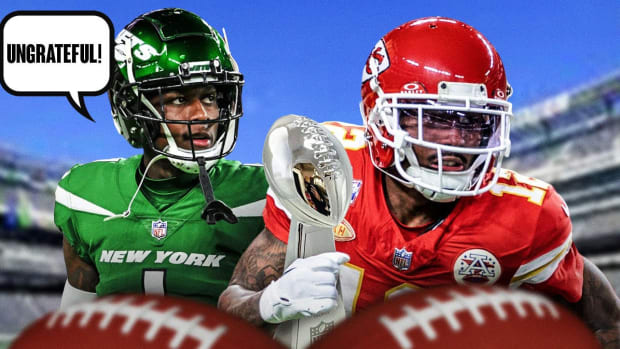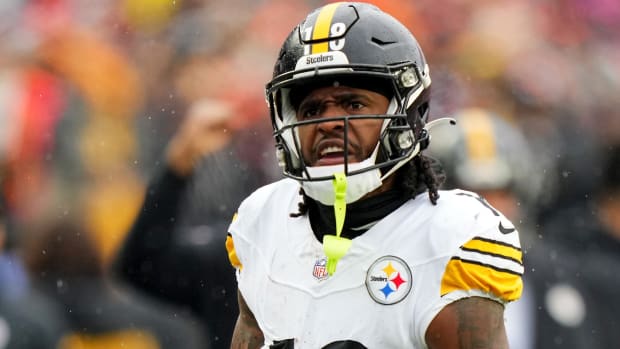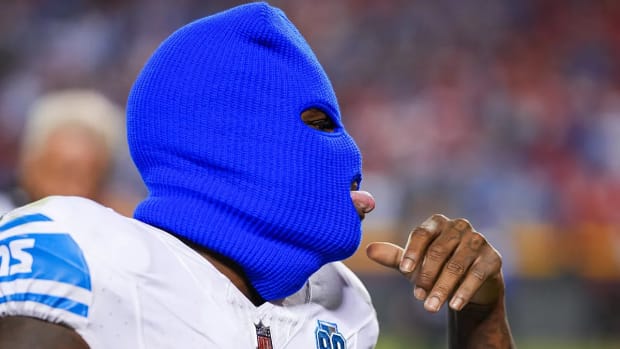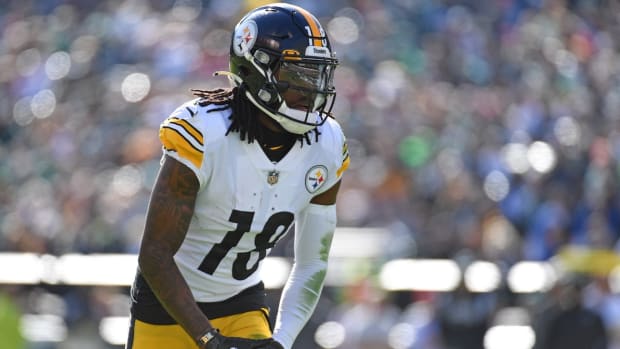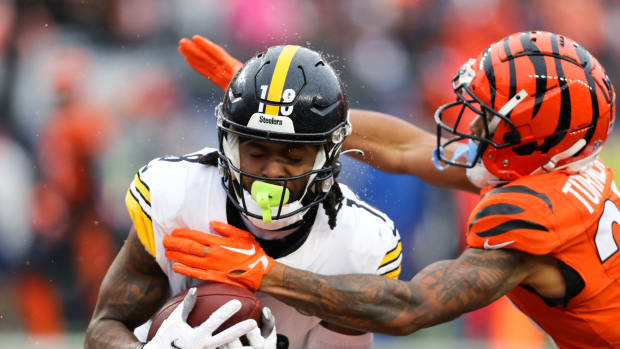At the Super Bowl, a Saints Rookie Meets the Man Whose Life He Saved
When Saints receiver Austin Carr was a freshman at Northwestern, he got his cheek swabbed to join the Be The Match bone marrow registry. Wildcats kicker Jeff Budzien told his teammates that Be The Match, the largest bone marrow registry in the world, was coming to campus for a donor drive, and Carr figured, why not? Some 20 Northwestern football players registered that day in January 2013.
Two-and-a-half years later, in November 2015, Carr’s phone rang with an unknown number. It was Be The Match, informing him that he’d been selected as a potential match. A month later it was official. He was a match to donate peripheral blood stem cells. “I was shocked initially,” Carr says. “And then very soon after, I prayed. Just to ask, what should I do?”
Be The Match wanted to begin the procedure immediately, because Carr’s recipient needed the transfusion as soon as possible. But the Wildcats had a New Year’s Day bowl game, and Carr wanted to be in top shape for it. After a few phone calls, Be The Match decided to wait to begin the procedure, which allowed Carr to play in the Outback Bowl. “I was able to remain committed to the team and also give blood and commit myself to helping save someone’s life,” he says.
A few weeks after the Wildcats’ Outback Bowl loss to Tennessee, Carr began the procedure to donate his blood stem cells. To prepare for donation, Carr took a drug called Filgrastim, which boosts the number of blood-forming cells in the bloodstream, for five days before the procedure. The first day on Filgrastim was normal, but he soon felt a bone soreness all over his body and had to stop working out. “I got bursts of pain in my hips that were crippling,” he says. “It was a very distinct and new kind of pain.”
The five-hour procedure of donating blood stem cells is similar to blood dialysis, where blood is removed through a needle in one arm and passed through a machine that sifts out the valuable blood-forming cells. The leftover blood is then returned to the donor through the other arm.
Immediately after Carr’s procedure, his blood stem cells were flown from a clinic in Rosemont, Ill., to a hospital in Kansas City, where Roy Coe, 59, waited for his transfusion.
Coe, a retired locomotive engineer for Union-Pacific railroad, had spent three years battling non-Hodgkin’s lymphoma, a type blood cancer. He went through eight rounds of chemotherapy to treat it, and then found out his cancer had become mantle cell lymphoma, which meant he would need a blood stem cell transplant. Coe spent six months awaiting a donor for his transfusion.
The necessity of the transfusion became clear the summer before he received Carr’s blood stem cells, when Coe and his girlfriend, Linda Baur, tried to take a short vacation after the fourth of July. They drove a couple hours east to Jefferson City, Mo., and Coe suddenly felt very sick. “I thought I was going to die,” he says. “I wasn’t able to go to bed because the pain was keeping me up.” The couple jumped back in the car to return to their hospital in Kansas City, but Coe couldn’t even make it that far. They had to stop halfway back, at a hospital in Lexington, Mo., because Coe was in so much pain from a cell that had swelled up. “The swelling of that one cell brought a little more urgency to it,” Coe says.
The 2016 transplant procedure was a success, and Coe spent the year-and-a-half transitioning back to a normal life until this past summer, when he found out that he had bladder cancer. “When you are fighting cancer, you feed it in one area and it tends to pop up in another,” Coe says. The doctors caught this issue early. Coe will go in for one more exploratory scope, to make sure that cancer is gone.
In the months following the successful transplant, both Coe and Carr knew very little about each other and wondered what the other person might be like. “My biggest desire was just to put flesh to him, a face to the name, flesh to the bone,” Carr says.
On Wednsday night of Super Bowl week, Carr and Coe met each other for the first time, at the Host Committee’s Business Connect gala. Be The Match, based in Minneapolis, facilitated the meeting and also provided Coe with two tickets to the Super Bowl.
“Austin is not normally too emotional, and right before they met, he said, ‘I might cry,’ ” says Austin’s wife, Erica Carr.
The two men, one a professional football player, and one a retired train engineer, shook hands when they were first introduced. “But we both knew that the initial greeting, that a handshake just wasn’t going to be enough,” Coe says.
“That’s true,” Austin says with a laugh. “Sorry if I squeezed you too tight.”
Carr’s college roommate, Matt Micucci, a kicker on the team, also joined the registry that day during their freshman year. About three months ago he was matched and called on to donate. Two Northwestern roommates and football players went on to save lives, an unusual coincidence when compared to Be The Match’s statistic that just one in every 430 registry members go on to become donors.
Carr envisions a future in which all NFL players are members of the Be The Match registry. A partnership between the two would be helpful to maintaining a diverse registry, since the majority of NFL players are African-American. The likelihood of finding a matched, available donor depends on ethnic background. Currently, African-Americans have a 23% chance of finding a matched, available donor. White patients have a 77% chance. Amy Alegi, VP of marketing and communications for Be The Match, says the non-profit is focusing on recruiting more African-Americans to join the registry.
Now that they’ve finally met each other, Coe and Carr will have a lifelong connection.
“As ugly as the world can get, there are still beautiful things in it and beautiful people in it,” Coe says. “I’m not the overly religious type, but I am quite spiritual. I do hear the message that Jesus gave, which is to take care of each other as best as we can.”
“Like Roy said, we teach our kids the Golden Rule, and that was something that I learned in kindergarten,” says Carr. “Treat others as you want to be treated. I’m a Christian, and treat your neighbor as yourself is a core biblical belief.”
Coe has been a Chiefs fan his entire life, but he says he’ll now pay more attention to New Orleans, the team his donor plays for. After all, he’s got a second shot at life, thanks to his personal saint.
To learn more about Be the Match, visit the website.
Question or comment, email us at talkback@themmqb.com.

































